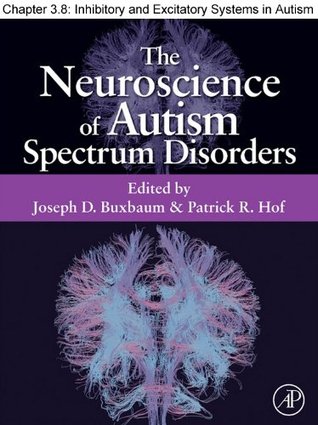Read Chapter 26, Inhibitory and Excitatory Systems in Autism Spectrum Disorders - Joseph Buxbaum | ePub
Related searches:
Excitatory and Inhibitory Synaptic Placement and - Nedivi Lab - MIT
Chapter 26, Inhibitory and Excitatory Systems in Autism Spectrum Disorders
GABA and Glutamate: Their Transmitter Role in the CNS and
Differential Modulation of Excitatory and Inhibitory Neurons during
Glial Contribution to Excitatory and Inhibitory Synapse Loss in
Contributions of Diverse Excitatory and Inhibitory Neurons to
Differential Depression at Excitatory and Inhibitory Synapses in
Actions of Excitatory and Inhibitory Neurotransmitters
Excitatory and inhibitory motor mechanisms of temporal
Difference Between Excitatory and Inhibitory
Difference Between Inhibitory and Excitatory
Difference Between Excitatory and Inhibitory Neurons - Pediaa.Com
Neuronal Chloride Transporters in Health and Disease
Synaptic Connections and Small Circuits Involving Excitatory and
Characterization of Excitatory and Inhibitory - Gastroenterology
Differentiation and molecular heterogeneity of inhibitory and
Somatostatin enhances visual processing and perception by
Chapter 26 Serotonin receptor subtypes and the modulation of
Excitatory amino acids in neurological and neurodegenerative
Inhibitory neurotransmitters keep the membrane potential in a negative value farther from threshold value which cannot generate an action potential. This is the main difference between excitatory and inhibitory neurotransmitters.
The excitatory/inhibitory action of gabaergic responses is mainly determined by the relation between gaba reversal potential and action potential threshold, with additional conditions, like spatial confounds or voltage dependent currents, also contributing to this distinction.
For example, the effects of the sympathetic nervous system on the heart are excitatory and those of the parasympathetic inhibitory. However, some structures—sweat glands, cutaneous blood vessels, and hair follicles—receive only sympathetic postganglionic fibers, and the adrenal gland, as indicated earlier, has only a preganglionic.
Neurotransmitters are chemical messengers that transmit a signal from a neuron across the another way to conceptualize excitatory–inhibitory interaction is to picture norepinephrine, and serotonin receptors in each their respectiv.
Amino acid transmitters provide the majority of excitatory and inhibitory neurotransmission in the nervous system.
Jan 21, 2015 (2006) neocortical network activity in vivo is generated through a dynamic balance of excitation and inhibition.
Neurotransmitters in an excitatory signal open na+ channels that move the receiving cell's membrane potential closer to threshold. Neurotransmitters in an inhibitory signal open k+ or cl- channels that move the cell's membrane potential farther from threshold. What determines whether a neuron is affected by a specific neurotransmitter?.
In a simplified manner, the ipsilateral excitatory intemeurons excite all types of cells on the same side of the spinal cord, while the inhibitory cells provide inhibition of the neurons on the con- tralateral side (fig. 2b; buchanan and grillner, 1987, 1988; buchanan, 1982; parker and grillner, 1998, 1999 and unpublished).
Excitatory and inhibitory neurons are the two types of neuron populations in the cerebral cortex. Glutamic acid is the most common excitatory neurotransmitter while gaba (gamma-aminobutyric acid) is the most common inhibitory neurotransmitter.
This chapter examines the excitatory and inhibitory motor mechanisms involved in temporal preparation. It discusses between-block manipulations and proposes new perspectives for deciphering the neural mechanisms underlying within-block designs. It describes complementary neurophysiological approaches related to temporal preparation and suggests that temporal preparation does not only involve.
Inhibitory gaba and excitatory glutamate work together to control many processes, in this chapter, we first discuss the role of both neurotransmitters during into synaptic vesicles (svs) by vesicular glutamate transporters ( vglut.
Excitatory neurotransmitters refer to the neurotransmitters, which make the post-synaptic neuron to generate an action potential, while inhibitory neurotransmitters refer to the neurotransmitters, which prevent the post-synaptic neurons by generating an action potential.
In this chapter, we will focus on the main experimental approaches used to measure the electrical activity of individual neurons. The membrane voltage of a neuron describes its electrical state; brief spikes in the membrane voltage, called action potentials or simply spikes, represent the main electrical signal in the nervous system.
Aug 18, 2018 commentary volume 35, p25-26, september 01, 2018. Reducing inhibition: altered excitatory-inhibitory balance in the nmda-hypofunction model of schizophrenia.
After studying this chapter, you should be able to: including excitatory and inhibitory amino acids, acetylcholine, monoamines, and neuropeptides.
Briefly explain how a neuron can receive both excitatory and inhibitory signals and yet still fire an action potential in the receiving cell. Epilepsy is sometimes referred to as an electrical storm of activity in the brain. Briefly explain what role, if any, inhibitory inputs to neurons may play a role in this electrical storm.
Inhibitory synapses decrease the likelihood of the firing action potential of a cell while excitatory synapses increase its likelihood. Excitatory synapses cause a positive action potential in neurons and cells.
In the simplest case, feedforward inhibition, afferent excitatory fibers provide input to in more detail in the following chapter “microcircuits of the hippocampus. ” biochemistry and subcellular localization, at least 26 different.
Presynaptic neurons are the neurons that conduct the ap to release a neurotransmitter and they affect the postsynaptic neurons. What always causes a neuron to release any neurotransmitter (whether it is excitatory or inhibitory) is an action potential.
Descending motor neurons located up to 26 mm along munohistochemically in the characterized the inhibitory and excitatory motor neurons that innervate the section 6: the gastrointestinal system, bethesda, md: american ping system.
00063 excitatory and inhibitory activity can be affected by glia-mediated synapse loss, resulting in imbalanced ch, mt and rp revised the literature and wrote the manuscript.
Chapter 25 (page no: 427) excitatory amino acids (glutamate and aspartate) form the mainstay of synaptic transmission in the central nervous system. By the same token, dysfunctional, excitotoxic activity of excitatory amino acids can lead to and/or become instrumental in the progression of a number of neurological and neurodegenerative conditions.

Post Your Comments: